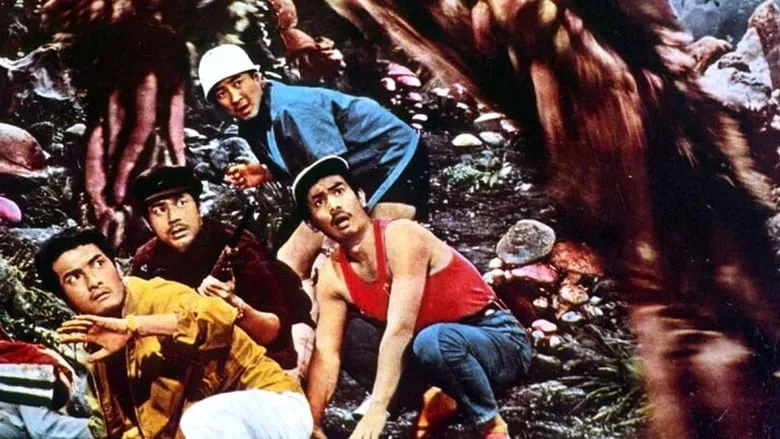Alcatraz: A Cinematic Myth and Real-World Intrigue
Few correctional facilities capture the collective imagination quite like Alcatraz. Shrouded in mist and mystery, perched precariously on a windswept island in the heart of San Francisco Bay, “The Rock” has transcended its origins as a federal penitentiary to become an enduring icon of American history. Its legacy, steeped in tales of notorious criminals and the desperate attempts to escape its formidable walls, has cemented its status as a recurring and beloved backdrop for filmmakers and storytellers across various mediums.
Recently, the infamous prison, which ceased operations in 1963, found itself back in headlines following reports suggesting a surprising potential reactivation. On May 4th, an order was reportedly issued to explore the expansion and reopening of Alcatraz for the detention of “the most violent” offenders – a development that would mark a dramatic shift for this historic site.
The Rock’s Unrivaled Allure in Hollywood
Alcatraz’s magnetic appeal to storytellers is clear. Its isolated island location, combined with its history of housing some of America’s most dangerous and infamous criminals, including the notorious Al Capone, provided a ready-made narrative of grim solitude, desperate ingenuity, and the ultimate test of human spirit against an unforgiving system. The architectural starkness of the prison itself, designed to be escape-proof, offers an inherently dramatic visual canvas, resonating deeply with audiences attracted to tales of confinement and rebellion.
From seminal jailbreak narratives to explosive action thrillers, Alcatraz has starred in a remarkable array of cinematic productions. The 1979 classic Escape from Alcatraz, starring Clint Eastwood, is perhaps the most famous, vividly portraying the meticulous and desperate attempt by Frank Morris and the Anglin brothers to break free from the supposedly impenetrable fortress. The film’s gritty realism and tension cemented Alcatraz’s legend in popular culture, making it synonymous with daring escapes.
Years later, the island once again took center stage in the high-octane 1996 blockbuster, The Rock, featuring Sean Connery and Nicolas Cage. This action spectacle turned the historical prison into a thrilling battleground, re-imagining its layout for a more explosive confrontation. Beyond direct narratives, Alcatraz’s distinctive silhouette and reputation have even extended into more unexpected genres, making a notable appearance in the futuristic setting of Star Trek Into Darkness. Furthermore, its profound isolation and the chilling idea of magical incarceration are even said to have subtly influenced elements within the immensely popular Harry Potter series, demonstrating the prison’s far-reaching cultural impact as a symbol of inescapable magical confinement.
Alcatraz Beyond the Big Screen: Television and Documentaries
While its cinematic presence often dominates the spotlight, Alcatraz has also made its mark on the small screen, albeit with a somewhat quieter resonance. Television productions have explored various facets of the island’s captivating story. Examples include the 1980 film Alcatraz: The Whole Shocking Story, which delved into the detailed history of the prison, and the 2012 science fiction series Alcatraz, which intertwined the prison’s past with a mysterious contemporary conspiracy. These television ventures often bring a different, sometimes more character-driven or fantastical, lens to the prison’s storied past, appealing to viewers seeking different narrative dimensions.
The enigmatic history of Alcatraz has also provided fertile ground for numerous documentary explorations, aiming to uncover its enduring mysteries and shed light on its factual narrative. These productions meticulously dissect the stories of its inmates, the day-to-day life within its walls, and, most famously, the numerous (and mostly failed) escape attempts. Notable documentaries include Escape from Alcatraz: The Lost Evidence (2018), which re-examines the famous escape with new insights; Alcatraz: The Final Verdict (1988), offering a comprehensive historical look; and Alcatraz: Search for the Truth (2015), which continues the investigation into long-held secrets. Even programs like TechKnow: Alcatraz (2017) have delved into the science and engineering behind its infamous design and a potential escape, blending historical inquiry with scientific analysis.
Alcatraz Today: A Tourist Destination
Since opening to the public in 1973, Alcatraz has undergone a remarkable transformation from a dreaded correctional facility to one of the Bay Area’s premier tourist attractions. Far from its daunting past as a place of confinement, The Rock now welcomes over 1.4 million visitors annually, as reported by the National Parks Conservation Association. These visitors flock to the island, drawn by its haunting history, the panoramic views of the San Francisco skyline, and the sheer mystique that continues to surround this storied landmark. It stands as a powerful testament to history, human resilience, and the enduring power of narrative, whether real or imagined.